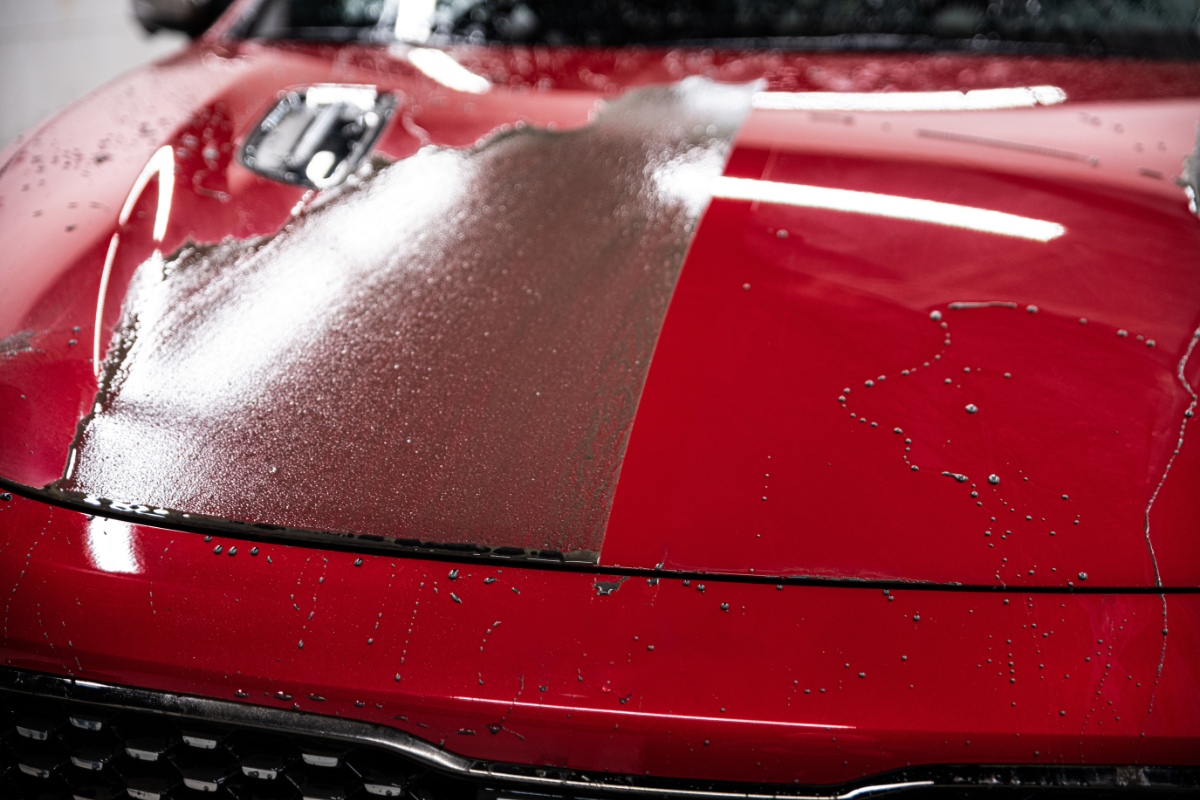Experience expert car detailing to deep clean your vehicle’s interior and exterior.
Experience expert car detailing to deep clean your vehicle’s interior and exterior.
Blog Article
A Comprehensive Guide to the Kinds Of Ceramic Finishing on the Market
Ceramic layers have arised as a pivotal option across different industries due to their unique residential properties and applications. As we check out the distinct qualities and applications of these layers, the effects for efficiency and long life end up being significantly apparent, increasing inquiries regarding which type might ideal suit your demands.
Comprehending Ceramic Coatings
Ceramic finishings are sophisticated safety remedies that have gotten appeal in different sectors, particularly in automotive and aerospace applications. These layers include a fluid polymer that, when cured, forms a durable, hydrophobic layer externally of the substrate. This layer offers improved resistance to ecological contaminants, UV radiation, and chemical direct exposure, consequently expanding the life and aesthetic charm of the underlying material.
The essential component of ceramic finishes is silica, which adds to their firmness and toughness. The application process typically includes surface area preparation, application of the covering, and treating, which can be accomplished with warm or UV light. When healed, ceramic coverings display phenomenal bonding residential or commercial properties, permitting them to adhere strongly to a range of surfaces, including metals, plastics, and glass.
In enhancement to their safety features, ceramic coatings also supply ease of upkeep. Their hydrophobic nature decreases the adherence of dust and grime, making cleaning easier and less constant. Generally, the adoption of ceramic coatings represents a significant advancement in surface area security innovation, providing both useful and visual benefits across multiple fields.
Sorts Of Ceramic Coatings
Numerous kinds of ceramic layers are available, each developed to satisfy particular efficiency demands and applications - Auto Detailing. One of the most usual types consist of:
Silica-based Coatings: These finishings primarily contain silicon dioxide and are known for their durability and chemical resistance. They are widely utilized in vehicle and commercial applications.
Titanium Dioxide Coatings: Distinguished for their photocatalytic residential or commercial properties, titanium dioxide finishes are frequently used in atmospheres where self-cleaning and antifungal residential properties are desirable, such as in building products and automotive finishes.
Zirconia Coatings: Characterized by their high-temperature stability and thermal resistance, zirconia coatings are used in applications such as turbine engines and high-performance auto elements.
Alumina Coatings: Exhibiting excellent solidity and thermal security, alumina coatings are often utilized in wear-resistant applications, including reducing tools and industrial equipment. - ceramic coating sarasota
Crossbreed Coatings: Incorporating the residential properties of different products, hybrid layers supply boosted efficiency features, making them ideal for distinct and demanding applications.
Each sort of ceramic coating serves distinct functions, permitting users to select one of the most appropriate solution based upon certain environmental conditions and efficiency requirements.
Advantages of Ceramic Coatings
Ceramic coverings, in particular, deal many benefits that make them progressively prominent among makers and customers alike. These coatings are immune to scratches, chemicals, and UV rays, ensuring that the underlying surface stays protected over time.
Along with durability, ceramic coverings provide outstanding hydrophobic residential or commercial properties, enabling very easy cleaning and maintenance. This water-repellent nature lessens the adherence of dirt, grime, and check these guys out other impurities, which can extend the visual appeal and capability of the surface. Ceramic layers can substantially enhance thermal resistance, making them suitable for applications that endure high temperature levels.

Application Refine
When applying ceramic coverings, a careful approach is crucial to attain ideal results. A clean surface makes sure proper bond of the finish.
When the surface is prepped, the next action is to use the ceramic covering. This can be done utilizing an applicator pad or a microfiber towel, guaranteeing even protection. It is crucial to operate in tiny sections to preserve control and avoid early curing. The finish should be applied in thin layers, as thicker applications can result in uneven finishes.
After application, the finishing calls for a certain healing time, typically varying from a few hours to a complete day, depending on the item. Throughout this time, it is important to avoid exposure to wetness or contaminants. A mild buffing might be essential after treating to boost the gloss and get rid of any type of high places. Adhering to these actions carefully will take full advantage of the efficiency and durability of the ceramic layer, providing a durable protective layer for the surface area.
Maintenance and Durability
To make sure the long life see post and effectiveness of a ceramic coating, regular maintenance is important. Ceramic coverings, understood for their resilience and safety qualities, need details treatment routines to optimize their life expectancy and performance.
Along with normal washing, routine assessments are vital. Search for indications of wear or damages, such as hydrophobic homes diminishing or surface area blemishes. If necessary, a light polish may be put on revitalize the finish without removing it away.
In addition, the application of a booster spray can boost the layer's hydrophobic results and restore its gloss. This is specifically useful for coverings that have remained in use for a prolonged duration. Ultimately, by adhering to these maintenance methods, one can substantially expand the life of a ceramic finish, making certain that it continues to give optimum security against environmental aspects and keep the aesthetic allure of the vehicle.
Final thought

Report this page